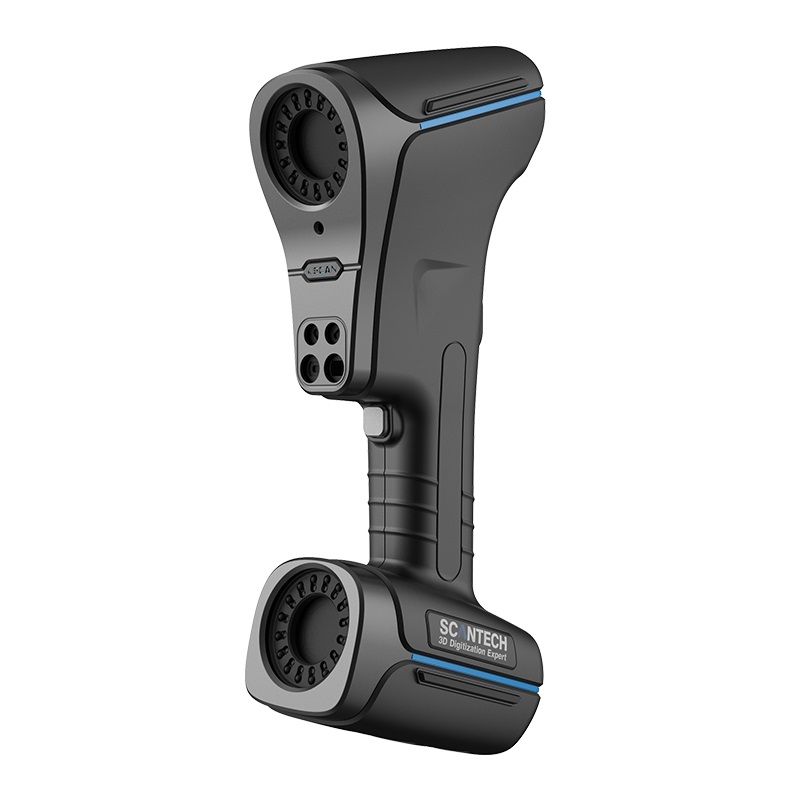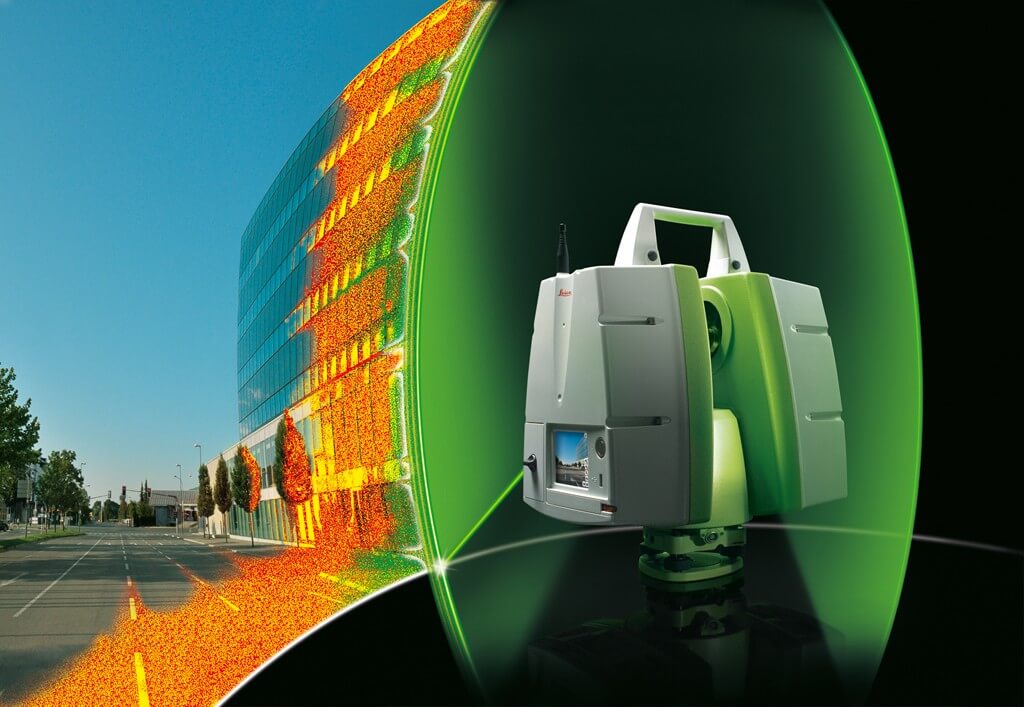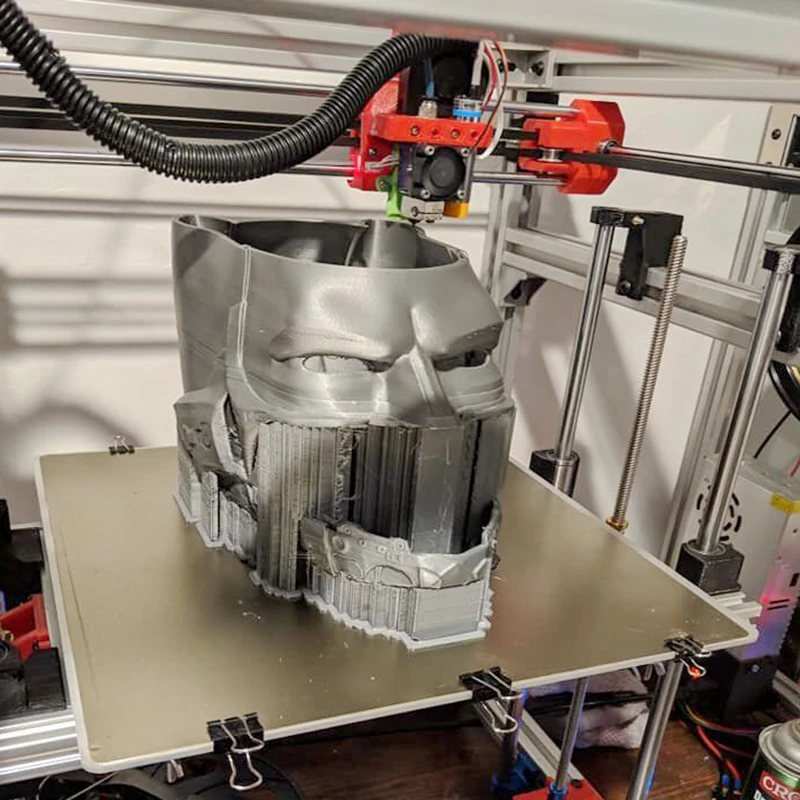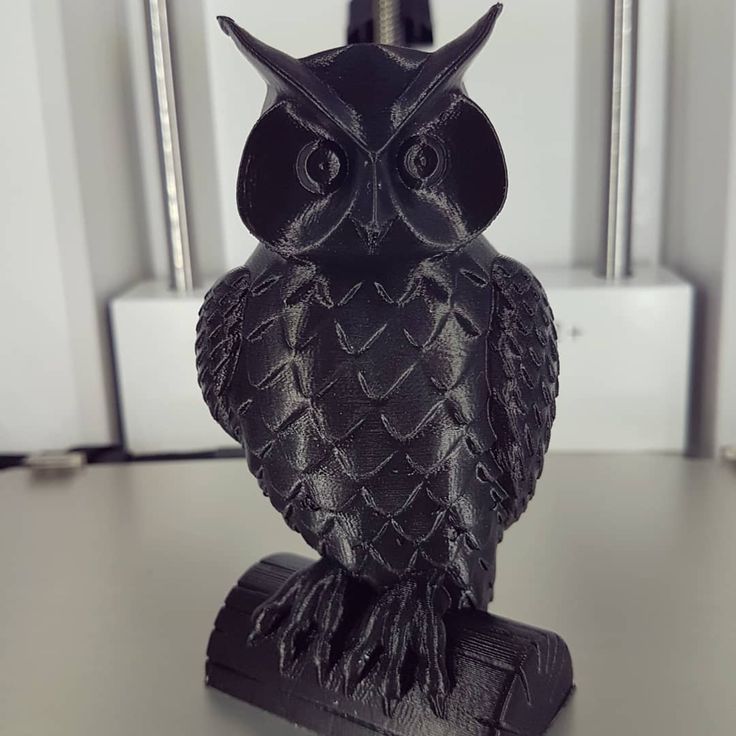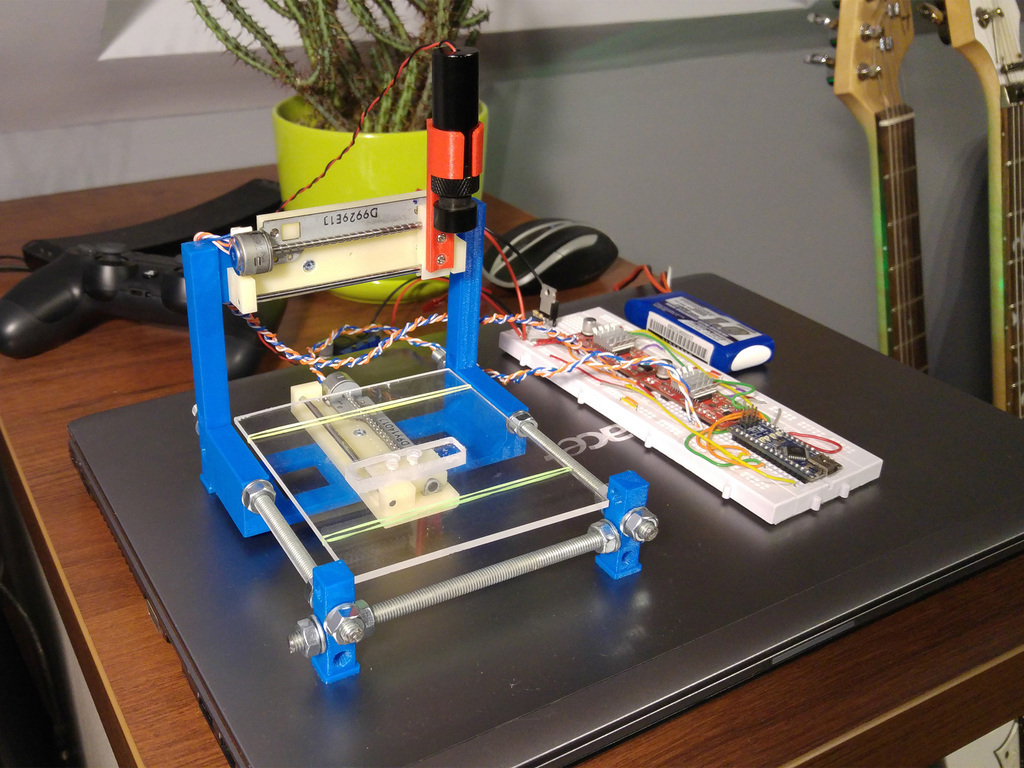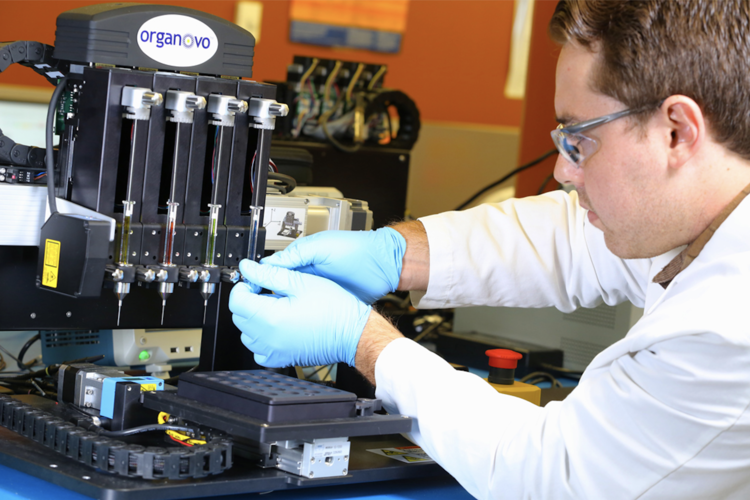How to make a 3d printer at home cheap
I built the cheapest 3D printer available online so that you don’t have to: iNSTONE Desktop DIY (review)
How cheap can a 3D printer be and still function? Although they seemed plucked out of science fiction, there’s not really that much to these machines. A few stepper motors, some switches, a control board, a heating element, and a nozzle are really all you need. It’s the software, and the expiration of a bunch of patents, that kicked the 3D printing revolution into high gear.
Is it possible to assemble the right collection of components to make a functional 3D printer for less than $100? iNSTONE thinks you can, and they are not wrong.
Behold, the iNSTONE Desktop DIY.
iNSTONE Desktop DIY. Photo by Author.This is the best printer you could build for $99. It’s terrible. I love it. You absolutely should not buy it.
This is a cantilever printer with a small build space, no heated bed, a fairly standard OS (that connects with a type-B USB port, which I haven’t seen on a piece of consumer electronics since 2015), and absolutely no frills. I never plugged in the provided power supply; it will not spark joy.
If the design philosophy behind the Anet A6 is “how do we make the most 3D printer for $200?”, the philosophy behind iNSTONE is “how do we make the best 3D printer for less than $100?” Honestly, I think they pulled it off. At a quarter the build volume, there’s more metal in this machine than in the Anet. Its main structural elements are extruded aluminum. The steppers are decent quality. The hot end is a very cheap E3D clone. The mechanism on the Bowden extruder is dense injection-molded plastic. You can pick it up and move it around without feeling like everything needs to be re-calibrated.
It has a rotary encoder on the control board, something the Monoprice Mini Delta lacked.
The kit also came with more tools than any of the other printer kits, including everything you need, this awesome little snipper, and several wrenches that don’t actually fit any of the bolts on the printer.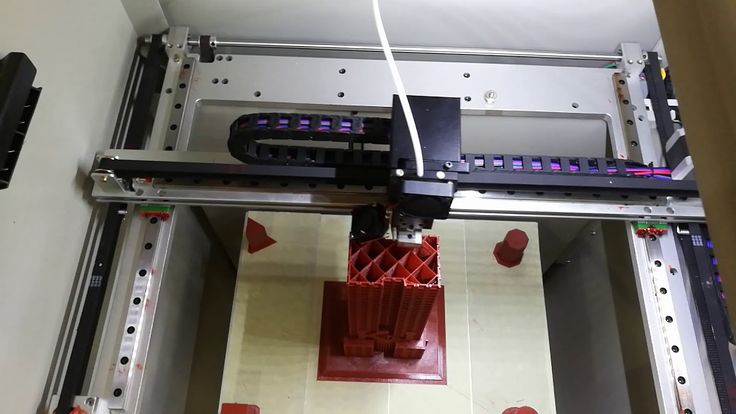
If you were to send me to a market in Shenzhen with $100 in Yuan and ask me to assemble the best 3D printer I could, I really doubt I could do better than this machine. There are a ton of clever little design details that demonstrate the shear amount of thoughtful engineering that went into making this thing work. This printer is going to occupy a place of pride in my workshop.
View this post on Instagram
Well, I got the $99 #3Dprinter running and printing, which is progress.
A post shared by Andrew David Thaler (@drandrewthaler) on
Unfortunately, the iNSTONE Desktop DIY is objectively terrible. Unless you’re a 3D printer enthusiast looking for a curiosity to add to you collection (and a really fun build), you absolute should not buy this.
For an explanation of our testing protocols, please see: We’re gonna beat the heck out of these machines: The search for the best dirt-cheap 3D printer for fieldwork.
The Burn In.Building this printer was a whole heap of fun. The instructions were clear enough if you’re familiar with 3D printing but probably too vague if you’ve never built one before. Everything is mounted to the extruded aluminum frame with t-nuts, creating a very strong, stable structure. The kit was missing some parts, but fortunately I had replacements in the shop.
There are simple mechanisms to adjust each axis. The z-axis has the strangest coupler I’ve ever seen. Rather than attach the threaded rod to a piece of machined aluminum or even a 3D-printed part, the iNSTONE Desktop DIY uses a small piece of PVC tubing (more on that, later).
There’s not much else too this. The printer has no heated bed or blower fan to cool the print. The fiberglass build plate is held in place by two OEM binder clips.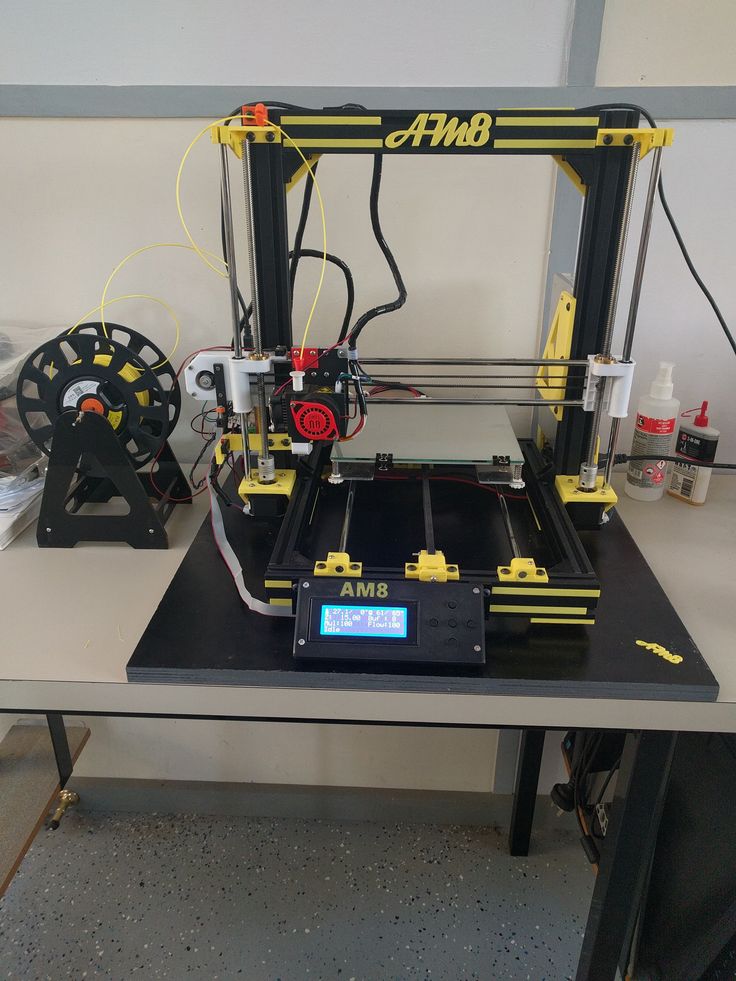
View this post on Instagram
Today we’re building the iNSTONE DIY $99 3D printer. It’s the cheapest printer currently available in the USA. Some early observations: it’s the only one so far that’s come with a full set of real tools (not the dinky sheet metal wrenches). They also sent the wrong power adapter, so this’ll be fun. #3dprinting #conservation #ecology
A post shared by Andrew David Thaler (@drandrewthaler) on
Getting a good print out of this machine is an exercise in patience. The build plate is adjusted by three thumbscrews, one of which is nearly impossible to reach. The three point design is not solid. The build plate loses alignment constantly, sometimes even in the middle of a print.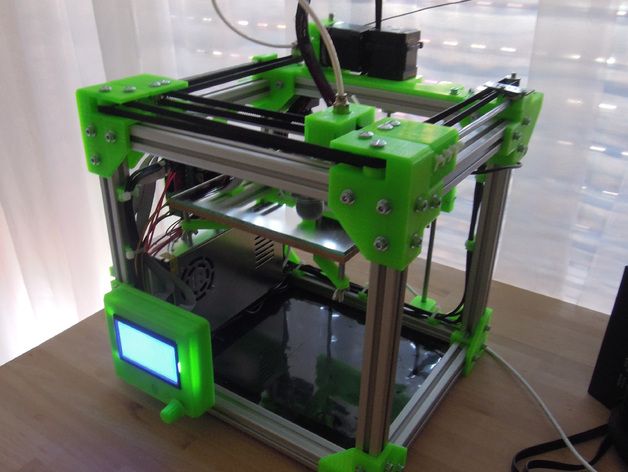 It took almost a week of daily tweaking and tightening and calibrating to get this machine to the point where it would reliably lay down a solid layer and get to printing.
It took almost a week of daily tweaking and tightening and calibrating to get this machine to the point where it would reliably lay down a solid layer and get to printing.
Most of the demo prints failed because of z-axis wobble (more on that, later). Finally, after a herculean effort, the first passable print emerged from the provided g-code: this vaguely spooky mask.
Vaguely spooky. Photo by author.Burn-in Score: C
The Benchmark Test. Oh Benchy, I’m so sorry. Photo by author.There’s nothing glaringly bad about this Benchy other than the obvious wobble everywhere. It printed. Over-extrusion and a wobbly build plate means that you can’t read any of the bottom print and there’s some slight elephant footing. There’s a big vertical jump near the top from the z-axis slipping (more on that, later). Nothing is awful, but everything is just slightly sloppy.
Benchmark Score: C
The Replication Test.The purpose of the replication test is not to make 3 pretty ok Cute Octos, it’s to make 3 consistent Cute Octos. The lack of cooling, unstable build plate, and absence of a heated bed means that each Octo warped and weirded in different ways.
The lack of cooling, unstable build plate, and absence of a heated bed means that each Octo warped and weirded in different ways.
This test was a failure.
Replication Score: F
The Functional Parts Test.When it comes to the threads of a screw, it’s all about z-axis control. And this printer does not have it (more on that, later). The threads were sloppy and loose. There was a ton of wobble between the two parts and they did not hold firm. They work, but just barely and not in any way that would be useful.
It’s… not as out of focus as you think it is. Photo by author.Functional Part Score: D
The Complex System Test.It’s time. We need to talk about the z-axis. I thought the worst thing I’d seen on a 3D printer is those terrible flexible couplers on the Anet A6. I was wrong. This is how the z-axis connects to the motor on the iNSTONE Desktop DIY:
What?! Photo by author.
It’s just a piece of PVC tubing held in with friction. For a printer that ticked so many geek boxes for me, that’s so disappointing. This is why there’s no control over the z-axis, why there’s so many gaps in the vertical shells, and why, if you try to print out something at 200 micron resolution, it looks like this:
Hello darkness my old friend. Photo by author.Simply put, this machine just doesn’t have the range.
At 100 microns, the Niskin receiver took 11 hours to print (2 to 4 is the average on the other tested printers). It was flimsy, the servo didn’t fit snugly, and the parts all had way too much play. As a testament to the brilliance of the Niskin3D design team, the water sampler still worked, but just barely. It feels like it’s ready to snap apart at any moment, so I didn’t even attempt the in-water test.
View this post on Instagram
Can you print a Niskin bottle with a $99 #3Dprinter? Yes.
Should you? No. #3dprinting
A post shared by Andrew David Thaler (@drandrewthaler) on
Complex System Score: D
The Precision Instrument Test.Can a $99 3D printer print a precision scale suitable for a navigational instrument at 50 micron resolution?
Printrbot in silver, iNSTONE in orange. Photo by author.No. It cannot.
Precision score: F
The Educator’s Test.
I was really hopeful going in to this one. It was the final print of the review, the printer settings were as dialed in as humanly possible, and the Isopod model was intentionally designed to be easy to print on most low-end printers.
It might be an Isopod. Photo by author.Z-axis wobble strikes again (more on that, earlier). The vertical layers are inconsistent with big gaps, much of the detail is gone, the base looks awful, and there is warping on the telson.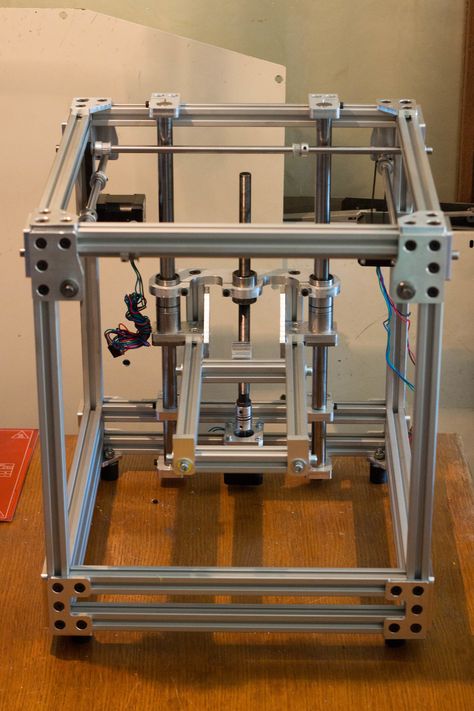 You can tell it’s an isopod, but that’s about it.
You can tell it’s an isopod, but that’s about it.
Educator’s Score: D
The Tear-down.Like the Anet A6, pretty much the entire printer is exposed, so there’s not much to tear down. I spent a lot of time with this printer over the last few weeks and am intimately familiar with its inner workings. I’m not exaggerating when I said this is the best printer you could build for $99. It’s well designed and well made. The Bowden extruder shows signs of stress from filament being pulled in and out, but otherwise there’s no obvious signs of wear, no weird rubbing, and nothing that would raise a red flag.
It’s great for what it is, just “what it is” isn’t a great idea.
Note: In a lot of ways the Burn In and Tear Down tests for these reviews are redundant. Kit printers get exhaustive Burn In sections and fairly sparse Tear Downs. Pre-builts get the reverse. It all evens out.
Tear-down Score: A
The Trash Test.
This printer produced an order of magnitude more waste than any other printer tested, and that doesn’t even include all of the failed prints during burn-in.
Total mass of waste filament: 27.71g
Reviewer’s Discretion.
There’s a ton of things you could do to improve this printer. Adding an all-metal (or even 3D printed) z-axis coupler would go a long way to improving it. Redesigning the build plate and adding a heated bed would work wonders. It desperately needs a cooling fan directed at the build area.
But that would spoil the spirit of this machine. The iNSTONE Desktop DIY is a $99 3D printer, not a $99 3D printer + a week of post-purchase engineering + 5 years experience in 3D printing.
You don’t build a hundred-dollar 3D printer because you should, you build it because you can.
Final Assessment.
Honestly, I can’t even give this printer a score. You should not buy it.
Final Score: Stop. Don’t.
The rankings so far:
- Creality Ender-3 (with upgrades): A
- Monoprice Select Mini: B+
- Monoprice Mini Delta: B-
- Creality Ender-3 (unmodified): B-
- Anet A6: D+
- iNSTONE Desktop DIY: No
We’ve only got one printer left, the highly recommended $194 Creality Ender3, so come back soon for the final results!
Depending on how successful this project is, I may expand to include printers in the $200 to $400 price range. If you want to help make that happen, you can either use the Amazon Affiliate links in the post to buy printers, consumables, anything else or you can sign up for my Patreon and help support Southern Fried Science.
If you want to help make that happen, you can either use the Amazon Affiliate links in the post to buy printers, consumables, anything else or you can sign up for my Patreon and help support Southern Fried Science.
3D Printing on a Budget: What Do You Need to Know?
Published on July 4, 2022 by Madeleine P.
It is no secret that 3D printing is growing in popularity both at home and in industry. That is not to say that there are no obstacles that could prevent someone interested in the topic from taking it up as a hobby. The biggest one is the price. 3D printing can be expensive, between the machines, software, post-processing and of course material, the cost can creep up on users. For that reason, we decided to make a guide on 3D printing on a budget. We will take a look at everything from printer choice to filaments to software, post-processing and more to give you an accurate range for the best cheap options to get into 3D printing.
For anyone who is not as well-versed on 3D printing, it is important to note that there are many technologies you can use. FDM, SLA, SLS, LPBF and more all have their benefits and their drawbacks, however for this guide we will be focusing mostly on FDM and SLA. Out of all the techniques, FDM is the most accessible to the everyday user, machines and materials often are lower cost than their counterparts. Though often not as cheap as FDM, there are also SLA printers that are cheap, especially compared to the more industrial printers.
Budget 3D Printers
There are many different factors that affect printer price. First is, of course, the printing process used. More industrial technologies, especially those using metal, are understandably more expensive. Additionally, the size of the printer build plays a large role. However, it is entirely possible to find desktop 3D printers for under $200 using either FDM or SLA processes. Additionally, if you are willing to assemble the printer yourself, DIY kits are often cheaper than already assembled machines. Do note however, that depending on how much assembly you need to do, it could take several hours to accomplish.
Do note however, that depending on how much assembly you need to do, it could take several hours to accomplish.
In terms of printers under $200, there are a few options available. For those willing (or who prefer!) to put together their own printer with a DIY kit, Creality’s Ender 3 is one of the most popular on the market. And at a starting price of $155.00, it’s easy to see why. Creality is, in general, a popular 3D printing for its cheap machines, most of which can be easily found on sites such as amazon. Another Chinese manufacturer with printers under $200 is Anycubic. Out of their FDM machines, the Mega Zero 2.0 is only $189.00, though note it requires some assembly.
Anycubic’s Photon Zero (left) and the Ender 3 from Creality (right)
There are also a few SLA machines available in this price range. For example, Anycubic is also unique in that it offers one of the only SLA machines on the market that is under $200. The Photon Zero ($109.00) and Photon Mono ($199. 00) are both LCD-based SLA machines, though not that compared to many of the FDM printers in the same price range, their build volume is a little smaller, which is common with SLA machines. In between the prices of Anycubic’s two cheapest printers in the Photon series, you can find the Elegoo Mars UV Photocuring LCD MSLA 3D printer. Retailing at $149.99, it is slightly bigger than the Photon Zero though smaller than the Photon Mono. If your budget extends to $300, there is much more choice, as many of the “cheap” 3D printers are in the $200-300 range.
00) are both LCD-based SLA machines, though not that compared to many of the FDM printers in the same price range, their build volume is a little smaller, which is common with SLA machines. In between the prices of Anycubic’s two cheapest printers in the Photon series, you can find the Elegoo Mars UV Photocuring LCD MSLA 3D printer. Retailing at $149.99, it is slightly bigger than the Photon Zero though smaller than the Photon Mono. If your budget extends to $300, there is much more choice, as many of the “cheap” 3D printers are in the $200-300 range.
Budget 3D Printing Materials
Though printers are a larger investment up-front, over-time materials will likely be what drives up costs for those who want to get into 3D printing as a hobby. Additionally, with the cheaper 3D printers, you will also be limited in the materials you can use as they will only be compatible with certain filaments or resins.
Another thing to consider is that some printers will only be compatible with materials from their company. These might be more expensive than others on the market, whereas when users have the choice of material, they can choose the least expensive. Do keep in mind however that as with most things in life, often there is a direct correlation between price and properties of materials. The cheapest will certainly not be suitable for tasks beyond hobby printing.
These might be more expensive than others on the market, whereas when users have the choice of material, they can choose the least expensive. Do keep in mind however that as with most things in life, often there is a direct correlation between price and properties of materials. The cheapest will certainly not be suitable for tasks beyond hobby printing.
That being said, likely if you are looking for cheap materials, you will be buying thermoplastics, namely ABS, PETG, TPU and PLA. The four materials are some of the most commonly used in 3D printing with different properties and pros and cons. They are also the materials that are most often compatible with printers, PLA especially is widespread and able to be used with most FDM printers.
Thermoplastic filaments for use in 3D printing (photo credits: AMFG)
Even with cheaper materials, you will find a wide range for price. This is due to the properties of the material. For example, with PLA the most basic, cheapest options will have far worse physical properties than the high-range options. On MatterHackers, the cheapest PLA is around $18.99 ($15.59 per spool if bought in bulk) for a 1.75mm 1kg spool. However, most material manufacturers will sell PLA, PETG and TPU for somewhere in the $30-40 range.
On MatterHackers, the cheapest PLA is around $18.99 ($15.59 per spool if bought in bulk) for a 1.75mm 1kg spool. However, most material manufacturers will sell PLA, PETG and TPU for somewhere in the $30-40 range.
Though resins for laser-based SLA processes can be quite expensive, the machines on our list use LCD which not only allows for cheaper machines but also cheaper resins. For example, Matterhackers’ MH Build Series Epoxy-Free 3D Printer Resin is about $27.99 for a 1kg package. Similarly, if you buy an Anycubic printer, for an extra $36, you can buy a 1kg package of resin that they have developed specifically for their machines. Though the cheapest is more expensive than the cheapest PLA, overall resins are a similar price.
Software
One good thing about 3D printing is that many of the necessary softwares can be found online for free. For example, in order to design for 3D printing, users should have some type of modeling software, most often CAD software, and a slicer. Of course there are other softwares that can be used in 3D printing, such as optimization or workflow management softwares, but a lot can be done with just modeling and slicing. Luckily for anyone aiming to 3D print on a budget, there are many programs that are easy to use for beginners and completely free, including software programs that are open-source, meaning they are constantly updated and improved.
Of course there are other softwares that can be used in 3D printing, such as optimization or workflow management softwares, but a lot can be done with just modeling and slicing. Luckily for anyone aiming to 3D print on a budget, there are many programs that are easy to use for beginners and completely free, including software programs that are open-source, meaning they are constantly updated and improved.
Though originally created by Ultimaker, the cura slicer is open-source and can be used with most FDM machines. Note that you will need a different slicer with an SLA printer. (Photo Credits: Ultimaker)
Additionally, for those who may not want to design their own part from scratch, there are many platform where already developed designs can be downloaded for free. Thingiverse for example, has millions of 3D files that have been uploaded on the site by its user community. Users will be able to download a file directly from the site and from there you just need a slicer before the file can be put into your machine. There are many other free sites where you can find these files like Cults or MyMiniFactory.
There are many other free sites where you can find these files like Cults or MyMiniFactory.
For FDM, slicers like cura are free and popular and there are many more available. Note that due to differences in the process, SLA process will need a different software or for the cura software to be heavily modified. There are still free options available however, for example, CHITUBOX basic is free and popular for SLA/DLP processes. Also make sure that whatever machine you use, you check with files it is compatible with. Most are compatible with STL files as that is the standard in the industry, but that isn’t always the case.
Thingiverse is a free platform where you can download 3D files, a good option if you don’t have much experience with 3D printing design
Though it’s not obligatory, if you are looking to get into 3D printing on a tighter budget, it would be good to consider downloading a free STL repair software online. It is entirely possible to print without this software, but considering it is available free online, it is certainly worth it. By using an STL repair software, you will be able to reduce the waste from failed prints, saving significantly on materials.
By using an STL repair software, you will be able to reduce the waste from failed prints, saving significantly on materials.
Post-Processing
Post-processing can be a necessary step for many 3D printed parts, especially if you are using supports. With FDM printing it can be optional, though that limits the parts you can make as supports are what enable users to create parts with overhangs, or that are geometrically more complicated. Usually with FDM, unless you want a part that is more complicated, you can either buy supports that can be dissolved or use tools like needle-nose pliers to remove the extra materials, neither option thankfully is very expensive though it will add on to your budget.
Even parts made using FDM often need post-processing especially if there is support material like in the image on the left. Make sure to keep in mind the cost of tools (photo credits: MakerBot)
With all SLA/DLP processes, post-processing is obligatory. Though there are cheap options available, Anycubic offers a wash and cure machine for only $99 which could be a good option.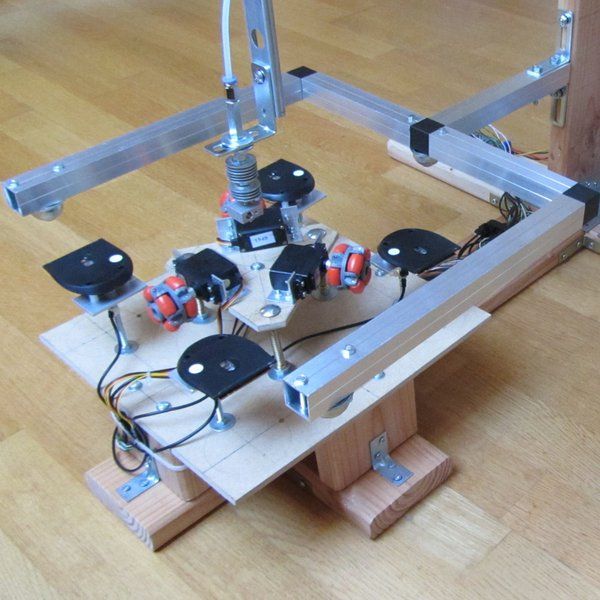 It is compatible with most SLA/DLP machines as well. It is also possible to buy resin cleaner to rinse the part yourself, this is usually around $10. Then like with FDM, supports can be removed with a model cutter. The final step is curing, which will always require a UV curing box. You can find these on amazon for cheaper, with many models on the site retailing for about $40.
It is compatible with most SLA/DLP machines as well. It is also possible to buy resin cleaner to rinse the part yourself, this is usually around $10. Then like with FDM, supports can be removed with a model cutter. The final step is curing, which will always require a UV curing box. You can find these on amazon for cheaper, with many models on the site retailing for about $40.
So is it really possible to get into 3D printing on a budget?
All in all, even if you are getting the absolute cheapest of everything, 3D printing is still an expensive hobby. Beyond the initial 3D printer cost, materials will need to be continuously bought which becomes expensive over time. Depending on material, it might also be necessary to invest in adhesives to minimise warping and other issues as well. However, there are ways to reduce the costs. Generally, considering the breadth of free software available and the fact that the cheapest machine on our list is about $109 with material setting you back another $30 and a post-processing machine for an additional $40-60, it is absolutely possible to invest in 3D printing for under $200.
If you are looking into 3D printing for just a few pieces, or if you want to see whether it will be profitable for a business, instead of investing in a printer, it might be a better idea to check out some available 3D printing services. 3D printing service bureaus will quote a price and print a part on your behalf. They are a great option for when you only want an occasional 3D printed part, you want to use a specific technology that you are not trained in, or if you want to test out 3D printing for your business. Ultimately, 3D printing services are the ideal way to ensure you are 3D printing on a budget as they will enable you to get your part at less cost than investing in materials and machines.
Would you be interested in getting into 3D printing on a lower budget? Let us know in a comment below or on our Facebook, Twitter and LinkedIn pages! Sign up for our free weekly Newsletter here, the latest 3D printing news straight to your inbox!
DIY 3D printer from inkjet printer
How to assemble a 3D printer from parts from an inkjet printer?
3D printer is a high-tech and expensive device.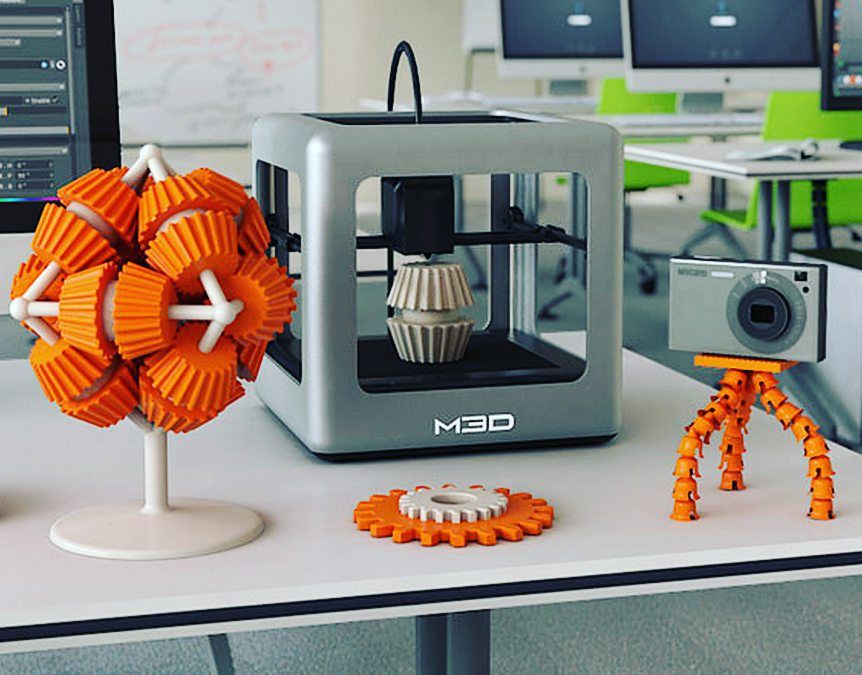 If you buy a cheap device, you may encounter poor-quality assembly, fragile components and a short uptime. Having in stock unnecessary, decommissioned, failed inkjet printers and scanners, you can assemble a printing device from their parts to create three-dimensional models. nine0003
If you buy a cheap device, you may encounter poor-quality assembly, fragile components and a short uptime. Having in stock unnecessary, decommissioned, failed inkjet printers and scanners, you can assemble a printing device from their parts to create three-dimensional models. nine0003
Do-it-yourself 3D printer from an inkjet printer
If the cost of the device is the leading factor in choosing a device for printing 3D objects, it is worth assembling a 3D printer yourself. According to user reviews, cheap models of 3D printed devices made in China have the main drawback - the low quality of components. In particular, guides are the weak point of Chinese devices. These elements are subjected to significant stress, and if they are of poor quality, they can be deformed under the action of tension belts. nine0003
Important! In older document printers, the rails are made of hardened steel. They do not bend even with considerable effort. Such details will be an ideal alternative to regular Chinese ones.
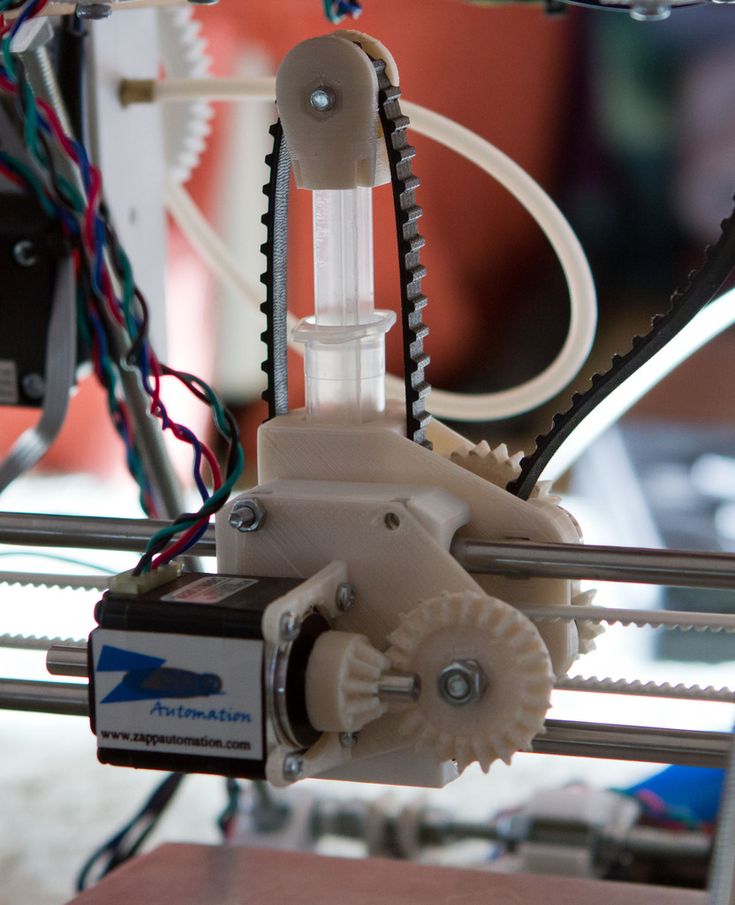
By dismantling unnecessary office devices, you can get a set of spare parts necessary for assembling a 3D printer and save a lot on the purchase of components. These are:
- printer head slide assembly;
- timing belts; nine0022
- mechanical or optical limit switches;
- power supply;
- stepper motors and drivers with controllers and other parts.
Attention! Inexpensive inkjet printers were mostly equipped not with stepper motors, but with DC motors with an encoder. Theoretically, they can be used in the assembly of a 3D apparatus by redesigning the latter. Stepper motors are usually extracted from scanners.
But the advantage of DC-motors should be noted: they consume electricity only during movement, while stepper motors are constantly supplied with power.
Accessories such as hot end, extruder and control board will have to be purchased. The frame is assembled from improvised materials - plywood, steel corners or parts of the cases of disassembled copiers.
The frame is assembled from improvised materials - plywood, steel corners or parts of the cases of disassembled copiers.
A self-assembled printer will be much cheaper than factory counterparts, but at the same time, it will be of higher quality than budget models presented on the market by Chinese manufacturers. nine0003
How to make a 3D printer from an inkjet printer: step-by-step instructions
To work on assembling a printer from donor components, you will need a set of tools and materials:
- hacksaw, drill - to make the case;
- soldering iron and solder - for mounting electrical cables;
- screwdrivers and hex set - for assembling components;
- pliers;
- multimeter tester - for checking the electrical circuit;
- screws and nuts; nine0022
- cable ties;
- electrical tape.
Attention! Knowledge of electronics and engineering is a plus.
Accessories:
- steel rails;
- timing belts;
- micro stepper motors;
- stepper motor drivers;
- extruder and hotend;
- optical sensors - limit switches-microswitches;
- power supply; nine0022
- connection cables;
- electronic control board and microcontroller based on Arduino;
- LCD display;
- desktop glass;
- parts for the frame.

Next, you will need to stock up on a fair amount of patience and pedantry - assembly requires careful observance of all instructions.
Assembly process
- Fabrication and painting of the frame.
- Mounting the X and Y frame axes and fixing stepper motors to them. The extruder will move along the X axis, the Y axis is needed to move the platform. nine0022
- Installing the Z axis support rod.
- Attaching the extruder.
- Connection of heating elements, cables, power supply.
- Assembly of electronic elements: boards, microcontroller, LCD display.
After assembling and testing the electrical circuits, install the software. At the last stage, the working table, the X, Y, Z axes, the temperature of the heating elements and the filament pulling speed are calibrated.
Important! nine0013 After starting the printer, print a test model. It will show all the flaws in the assembly and settings.
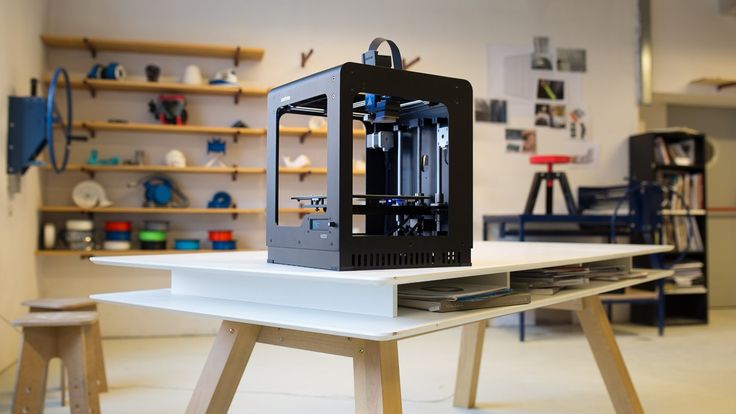
Mistakes and how to avoid them
Printer performance depends on the quality of the installation. But it is not always possible to eliminate errors when assembling the device.
- One of the serious mistakes that is often made when assembling the printer with your own hands is the incorrect installation of the frame elements. Even a slight misalignment of the corners will cause jamming when the carriages move. The geometry of the mating parts must be maintained as accurately as possible. nine0110 If the body is made of plywood, it is recommended to cut its elements on a CNC laser machine. When assembling a frame from metal corners, it is necessary to control the mating angles of the parts at each stage.
- The second common problem is the backlash of the frame elements. In this situation, print quality cannot be achieved. There should be no gaps between the parts. They occur either when the fasteners are loosely tightened, or if the frame elements are poorly prepared, that is, the dimensions are incorrectly maintained.
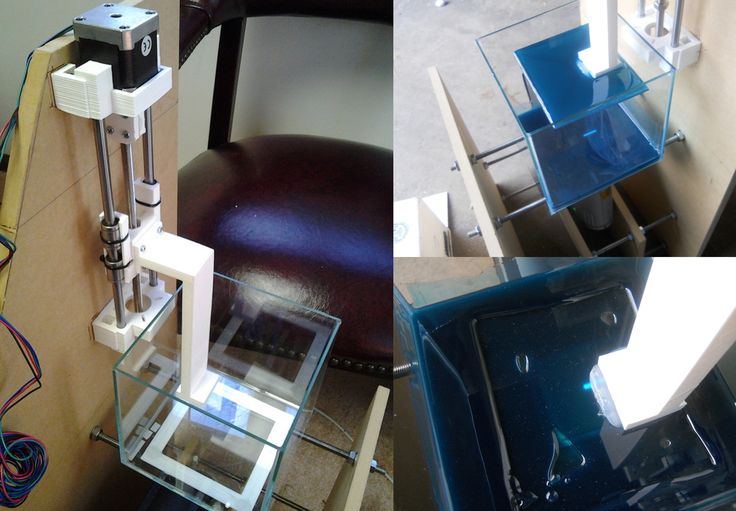 nine0022
nine0022 - If the electrical wiring connectors are not of good quality, there will be constant power outages. And the installation of short wires will cause them to break. The length of the wiring must match the dimensions of the frame, taking into account moving parts. It is necessary to check the tightness of the connection of the connectors, thereby minimizing the risk of disconnecting individual components and mechanisms from the power supply.
Quality control of the assembly at each stage, checking all connections and geometry of structural elements will help to avoid problems. nine0003
That's interesting! The article discussed how to assemble an FDM printer from improvised materials and parts left after dismantling office equipment. And an engineer from the Netherlands assembled a powder-type 3D printer based on an inkjet printer. As a filament, he used gypsum, sand, metal powder, and filled the cartridge with a binder. Otherwise, the technology is similar to laser layer-by-layer sintering.

Assembling a 3D printer with your own hands is not at all as simple an action as it seems at first glance. But lower financial costs and higher quality components compared to budget models from China make it expedient to manufacture a printing apparatus on your own. And given that a significant part of the parts will be recovered from the old inkjet printer and copier, this will further reduce the cost of producing a homemade 3D printer. nine0003
- May 17, 2021
- 3422
Get expert advice
Building your own home 3D printer: recommendations from personal experience
3D printing and assembly of 3D printers is my hobby and passion. Here I will not share detailed diagrams and drawings, there are more than enough of them on specialized resources. The main goal of this material is to tell you where to start, where to dig and how to avoid mistakes in the process of assembling a home 3D printer.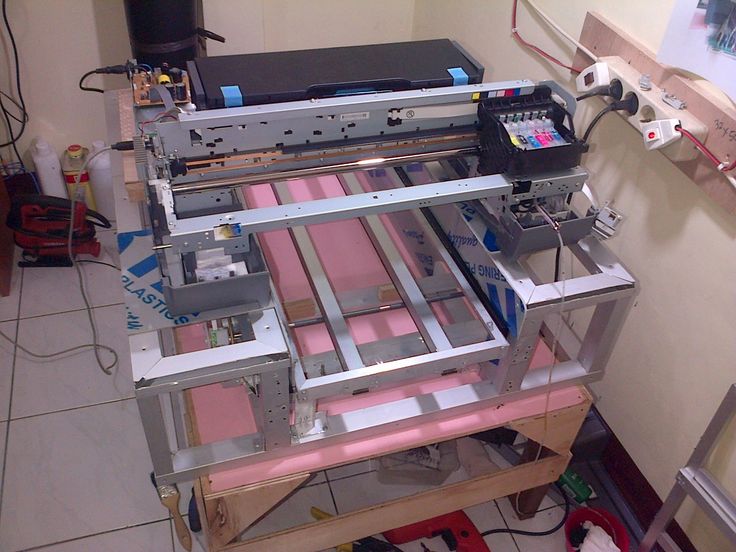 Perhaps one of the readers will be inspired by applied engineering achievements. nine0003
Perhaps one of the readers will be inspired by applied engineering achievements. nine0003
Why do you need a 3D printer? Use cases for
I first came across the idea of 3D printing back in the 90s when I was watching the Star Trek series. I remember how impressed I was by the moment when the heroes of the cult series printed the things they needed during their journey right on board their starship. They printed anything: from shoes to tools. I thought it would be great someday to have such a thing too. Then it all seemed something incredible. Outside the window are the gloomy 90s, and the Nokia with a monochrome screen was the pinnacle of progress, accessible only to a select few. nine0003
Years passed, everything changed. Around 2010, the first working models of 3D printers began to appear on sale. Yesterday's fantasy has become a reality. However, the cost of such solutions, to put it mildly, discouraged. But the IT industry would not be itself without an inquisitive community, where there is an active exchange of knowledge and experience and who just let them dig into the brains and giblets of new hardware and software.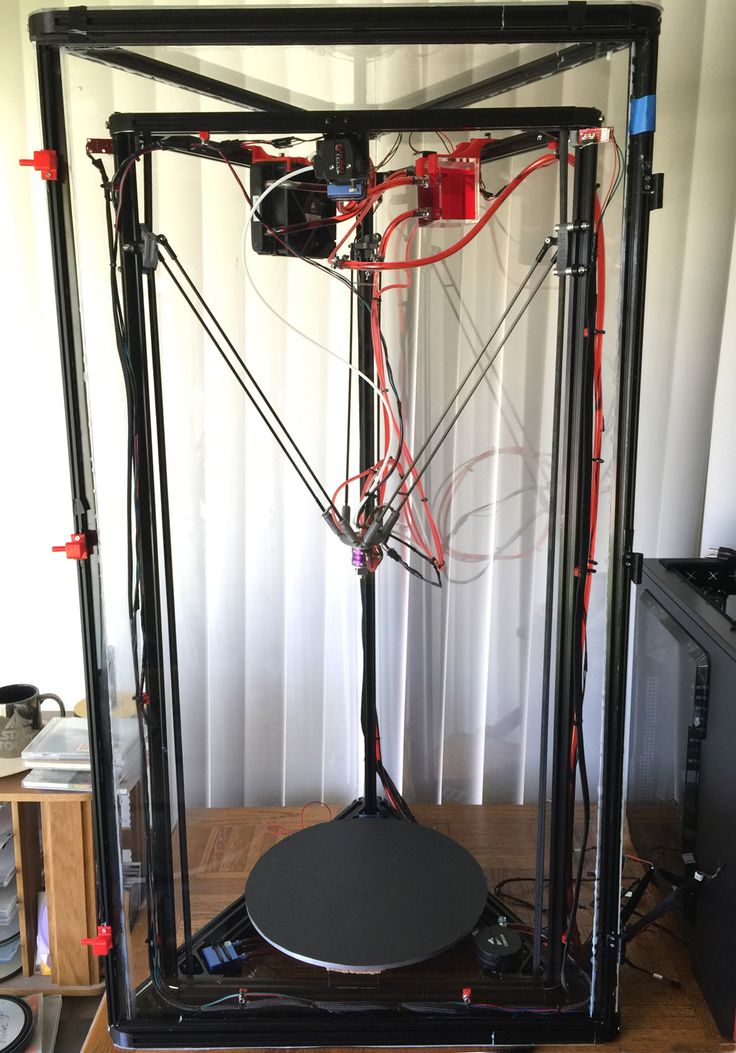 So, drawings and diagrams of printers began to surface more and more often on the Web. Today, the most informative and voluminous resource on the topic of assembling 3D printers is RepRap - this is a huge knowledge base that contains detailed guides for creating a wide variety of models of these machines. nine0003
So, drawings and diagrams of printers began to surface more and more often on the Web. Today, the most informative and voluminous resource on the topic of assembling 3D printers is RepRap - this is a huge knowledge base that contains detailed guides for creating a wide variety of models of these machines. nine0003
I built my first printer about five years ago. My personal motivation to build my own device is quite prosaic and based on several factors. Firstly, there was an opportunity to try to realize the old dream of having your own device, inspired by a fantasy series. The second factor is that sometimes it was necessary to repair some household items (for example, a baby stroller, car elements, household appliances and other small things), but the necessary parts could not be found. Well, the third aspect of the application is "near-working". On the printer, I make cases for various IoT devices that I assemble at home. nine0003
Agree, it is better to place your device based on Raspberry Pi or Arduino in an aesthetically pleasing "body", which is not a shame to put in an apartment or take to the office, than to organize components, for example, in a plastic bowl for food. And yes, you can print parts to build other printers :)
And yes, you can print parts to build other printers :)
There are a lot of scenarios for using 3D printers. I think everyone can find something of their own.
A complex part in terms of drawing that I printed on my printer. Yes, it's just a figurine, but it has many small elements
Ready solution vs custom build
When a technology has been tested, its value in the market drops markedly. The same thing happened in the world of 3D printers. If earlier a ready-made solution cost simply sky-high money, then today acquiring such a machine is more humane for the wallet, but nevertheless not the most affordable for an enthusiast. There are a number of solutions already assembled and ready for home use on the market, their price range ranges from $500-700 (not the best options) to infinity (adequate solutions start from a price tag of about $1000).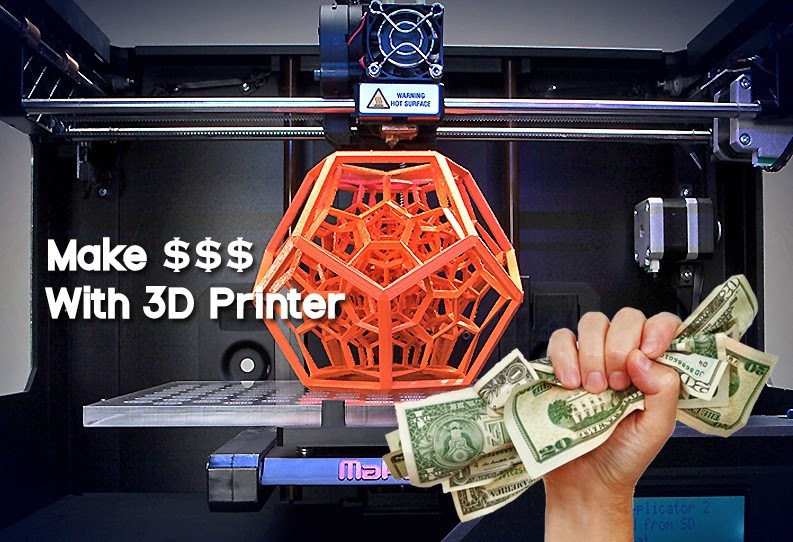 Yes, there are options for $150, but we, for understandable, I hope, reasons, will not dwell on them. nine0003
Yes, there are options for $150, but we, for understandable, I hope, reasons, will not dwell on them. nine0003
In short, there are three cases to consider a finished assembly:
- when you plan to print not much and rarely;
- when print accuracy is critical;
- you need to print molds for mass production of parts.
There are several obvious advantages to self-assembly. The first and most important is cost. Buying all the necessary components will cost you a maximum of a couple of hundred dollars. In return, you will receive a complete 3D printing solution with the quality of manufactured products acceptable for domestic needs. The second advantage is that by assembling the printer yourself, you will understand the principles of its design and operation. Believe me, this knowledge will be useful to you during the operation of even an expensive ready-made solution - any 3D printer needs to be serviced regularly, and it can be difficult to do this without understanding the basics. nine0003
nine0003
The main disadvantage of assembly is the need for a large amount of time. I spent about 150 hours on my first build.
What you need to assemble the printer yourself
The most important thing here is the presence of desire. As for any special skills, then, by and large, in order to assemble your first printer, the ability to solder or write code is not critical. Of course, understanding the basics of radio electronics and basic skills in the field of mechanics (that is, "straight hands") will greatly simplify the task and reduce the amount of time that needs to be spent on assembly. nine0003
Also, to start we need a mandatory set of parts:
- Extruder is the element that is directly responsible for printing, the print head. There are many options on the market, but for a budget build, I recommend the MK8. Of the minuses: it will not be possible to print with plastics that require high temperatures, there is noticeable overheating during intensive work, which can damage the element.
 If the budget allows, then you can look at MK10 - all the minuses are taken into account there. nine0022
If the budget allows, then you can look at MK10 - all the minuses are taken into account there. nine0022 - Processor board. The familiar Arduino Mega is well suited. I didn't notice any downsides to this solution, but you can spend a couple of dollars more and get something more powerful, with a reserve for the future.
- Control board. I'm using RAMPS 1.4 which works great with the Arduino Mega. A more expensive but more reliable board is Shield, which already combines a processor board and a control board. In modern realities, I recommend paying attention to it. In addition to it, you need to purchase at least 5 microstep stepper motor controllers, for example - A4988. And it's better to have a couple of these in stock for replacement.
- Heated table. This is the part where the printed element will be located. Heating is necessary due to the fact that most plastics will not adhere to a cold surface. For example, for printing with PLA plastic, the required surface temperature of the table is 60-80°C, for ABS - 110-130°C, and for polycarbonate it will be even higher.
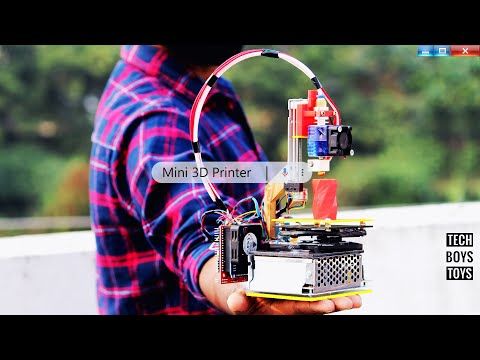
There are also two options for choosing a table - cheaper and more expensive. Cheaper options are essentially printed circuit boards with preheated wiring. To operate on this type of table, you will need to put borosilicate glass, which will scratch and crack during operation. Therefore, the best solution is an aluminum table. nine0022 - Stepper motors. Most models, including the i2 and i3, use NEMA 17 size motors, two for the Z axis and one each for the X and Y axes. Finished extruders usually come with their own stepper motor. It is better to take powerful motors with a current in the motor winding of 1A or more, so that there is enough power to lift the extruder and print without skipping steps at high speed.
- Basic set of plastic fasteners.
- Belt and gears to drive it. nine0013
Examples of elements appearance: 1) MK8 extruder; 2) Arduino processor board; 3) RAMPS control board; 4) motor controllers; 5) aluminum heated table; 6) NEMA 17 stepper motor; 7) a set of plastic fasteners; 8) drive gears; 9) drive belt
This is a list of items you need to purchase. Hardcore users can assemble some of them themselves, but for beginners, I strongly recommend purchasing ready-made solutions. nine0003
Hardcore users can assemble some of them themselves, but for beginners, I strongly recommend purchasing ready-made solutions. nine0003
Yes, you will also need various small things (studs, bearings, nuts, bolts, washers ...) to assemble the case. In practice, it turned out that using a standard m8 stud leads to low printing accuracy on the Z axis. I would recommend immediately replacing it with a trapezoid of the same size.
M8 trapezoidal stud for the Z axis, the use of which will save you a lot of time and nerves. Available for order on all major online marketplaces
nine0004 Customized plastic parts for the X axis must also be purchased, such as these from the MendelMax retrofit kit.Most parts available at your local hardware store. On RepRap you can find a complete list of necessary little things with all sizes and patterns. The kit you need will depend on the choice of platform (we'll talk about platforms later).
What's the price
Before delving into some aspects of the assembly, let's figure out how much such entertainment will cost for your wallet.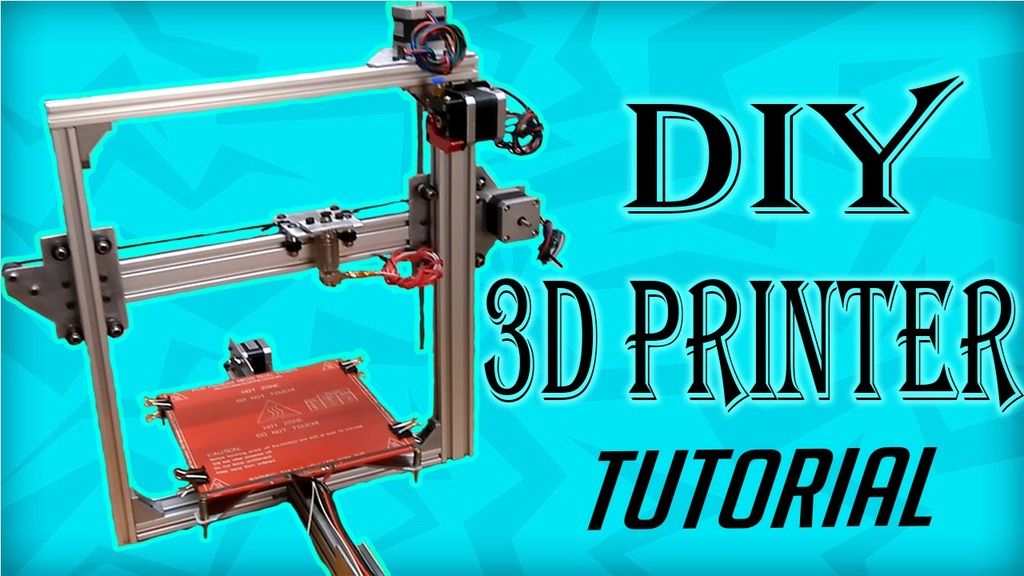 Below is a list of parts required for purchase with an average price. nine0003
Below is a list of parts required for purchase with an average price. nine0003
Platform selection
The community has already developed a number of different platforms for assembling printers - the most optimal case designs and the location of the main elements, so you do not have to reinvent the wheel.
i2 and i3 are key platforms for self-assembly printer enclosures. There are also many modifications of them with various improvements, but for beginners, these two classic platforms should be considered, since they do not require special skills and fine-tuning. nine0003
Actually, illustration of platforms: 1) i2 platform; 2) i3 platform
On the plus side of i2: it has a more reliable and stable design, although it is a little more difficult to assemble; more opportunities for further customization.
The i3 variant requires more special plastic parts to be purchased separately and has a slow print speed. However, it is easier to assemble and maintain, and has a more aesthetically pleasing appearance.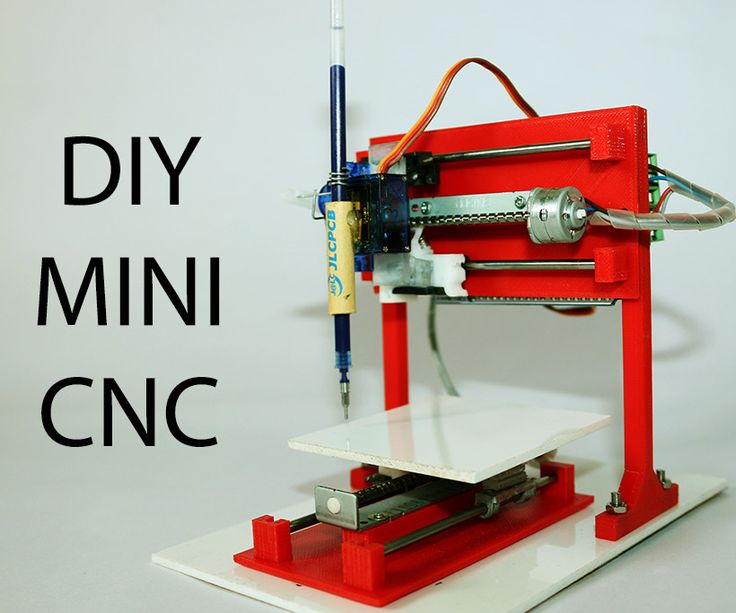 You will have to pay for simplicity with the quality of printed parts - the body has less stability than i2, which can affect print accuracy. nine0003
You will have to pay for simplicity with the quality of printed parts - the body has less stability than i2, which can affect print accuracy. nine0003
Personally, I started my experiments in assembling printers from the i2 platform. She will be discussed further.
Assembly steps, challenges and improvements
In this block, I will only touch on the key assembly steps using the i2 platform as an example. Full step by step instructions can be found here.
The general scheme of all the main components looks something like this. There is nothing particularly complicated here:
I also recommend adding a display to your design. Yes, you can easily do without this element when performing operations on a PC, but it will be much more convenient to work with the printer this way. nine0003
Understanding how all components will be connected, let's move on to the mechanical part, where we have two main elements - a frame and a coordinate machine.
Assembling the frame
Detailed frame assembly instructions are available on RepRap. Of the important nuances - you will need a set of plastic parts (I already talked about this above, but I'd better repeat it), which you can either purchase separately or ask your comrades who already have a 3D printer to print.
The frame of the i2 is quite stable thanks to its trapezoid shape.
This is how the frame looks like with parts already partially installed. For greater rigidity, I reinforced the structure with plywood sheets
Coordinate machine
An extruder is attached to this part. The stepper motors shown in the diagram above are responsible for its movement. After installation, calibration is required along all major axes.
Important - you will need to purchase (or make your own) a carriage for moving the extruder and a mount for the drive belt. Drive belt I recommend GT2. nine0003
The carriage printed by the printer from the previous picture after it has been assembled. The part already has LM8UU bearings for guides and belt mount (top)
The part already has LM8UU bearings for guides and belt mount (top)
Calibration and adjustment
So, we completed the assembly process (as I said, it took me 150 hours) - the frame was assembled, the machine was installed. Now another important step is the calibration of this very machine and extruder. Here, too, there are small subtleties.
Setting up the machine
I recommend calibrating the machine with an electronic caliper. Do not be stingy with its purchase - you will save a lot of time and nerves in the process.
The screenshot below shows the correct constants for the Marlin firmware, which must be selected in order to set the correct number of steps per unit of measure. We calculate the coefficient, multiply it, substitute it into the firmware, and then upload it to the board.
Marlin 9 firmware constants0185
For high-quality calibration, I recommend relying on larger numbers in measurements - take not 1-1.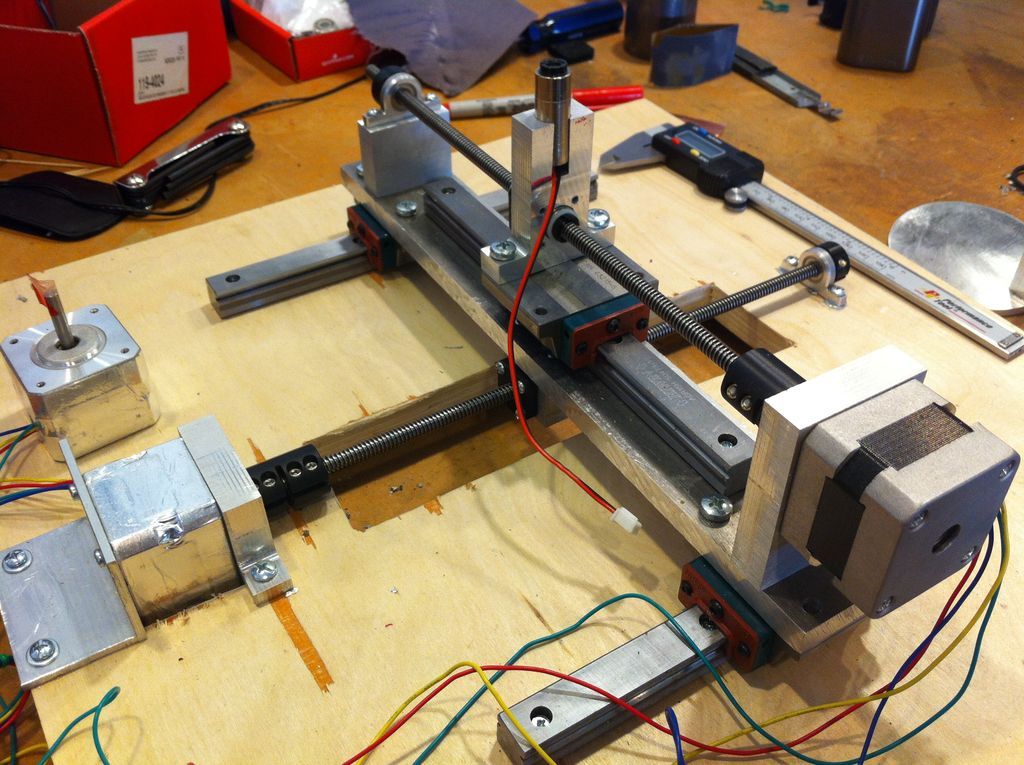 5 cm, but about 10. So the error will be more noticeable, and it will become easier to correct it.
5 cm, but about 10. So the error will be more noticeable, and it will become easier to correct it.
Calibrating the extruder
When the frame is assembled, the machine is calibrated, we start setting up the extruder. Here, too, everything is not so simple. The main task of this operation is to correctly adjust the supply of plastic.
If underfeeding, the printed test item will have noticeable gaps like test cube 1. Conversely, the result will look bloated if plastic is overfed (dice 2)
Getting Started Printing
It remains for us to run some CAD or download ready-made .stl, which describe the structure of the printed material. Next, this structure needs to be converted into a set of commands understandable to our printer. For this I use the Slicer program. It also needs to be set up correctly - specify the temperature, the size of the extruder nozzle. After that, the data can be sent to the printer.
Slicer interface
As a raw material for printing, I recommend starting with regular ABS plastic - it is quite strong, its products are durable, and it does not require high temperatures to work with. For comfortable printing with ABS plastic, the table must be heated to a temperature of 110-130 ° C, and the extruder nozzle - within 230-260 ° C.
For comfortable printing with ABS plastic, the table must be heated to a temperature of 110-130 ° C, and the extruder nozzle - within 230-260 ° C.
Some important details. Before printing, calibrate the machine along the Z axis. The extruder nozzle should be about half a millimeter from the table and ride along it without distortion. For this calibration, a regular sheet of A4 paper inserted between the nozzle and the surface of the heated table is best suited. If the sheet can be moved with little effort, the calibration is correct. nine0003
Another thing to keep in mind is the surface treatment of the heated table. Usually, before printing, the surface of the table is covered with something that hot plastic sticks to well. For ABS plastic, this can be, for example, Kapton tape. The disadvantage of adhesive tape is the need to re-glue it after several printing cycles. In addition, you will have to literally tear off the adhering part from it. All this, believe me, takes a lot of time. Therefore, if it is possible to avoid this fuss, it is better to avoid it. nine0003
Therefore, if it is possible to avoid this fuss, it is better to avoid it. nine0003
An alternative option that I use instead of scotch tape is applying several layers of ordinary light beer, followed by heating the table to 80-100 ° C until the surface is completely dry and re-applying 7-12 layers. It is necessary to apply the liquid with a cloth moistened with a drink. Among the advantages of this solution: ABS plastic separates from the table on its own when it cools down to about 50 ° C and is removed without effort, the table does not have to be peeled off, and one bottle of beer will last you for several months (if you use the drink only for technical purposes :)). nine0003
After we have collected and configured everything, we can start printing. If you have an LCD screen, then the file can be transferred for printing using a regular SD card.
The first results may have bumps and other artifacts - do not worry, this is a normal process of "grinding" the printer elements, which will end after a few print cycles.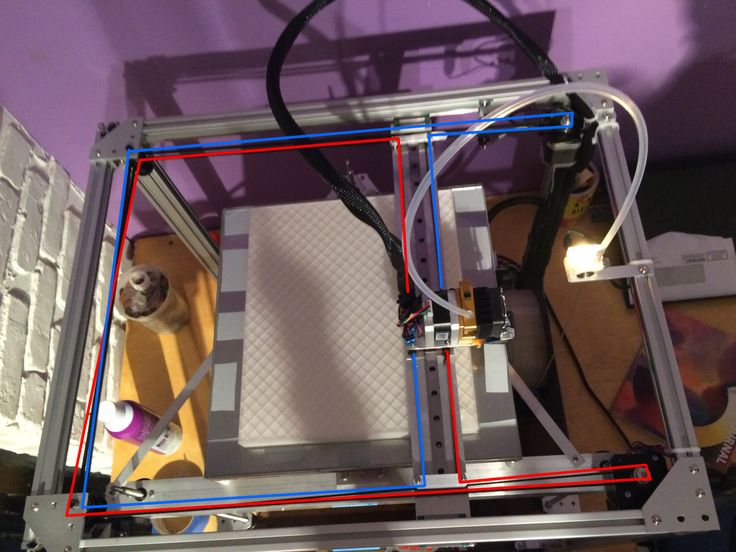
Tips to make life easier (and sometimes save money)
In addition to the small recommendations given in the text above, in this section I will also give a short list of tips that will greatly simplify the operation of a 3D printer and the life of its owner. nine0003
- Do not experiment with nozzles. If you plan to immediately print from materials that require high temperatures, then it is better to immediately take the MK10 extruder. On MK8, you can "hang" special nozzles that support high-temperature conditions. But such modifications often cause difficulties and require special experience. It is better to avoid this fuss on the shore by simply installing the right extruder for you.
- Add starter relay for heated table. nine0013 Improving the power supply system for this important printing part with a starter relay will help solve the known problem of RAMP 1.4 - overheating of the transistors that control the power of the table, which can lead to failure of the board.
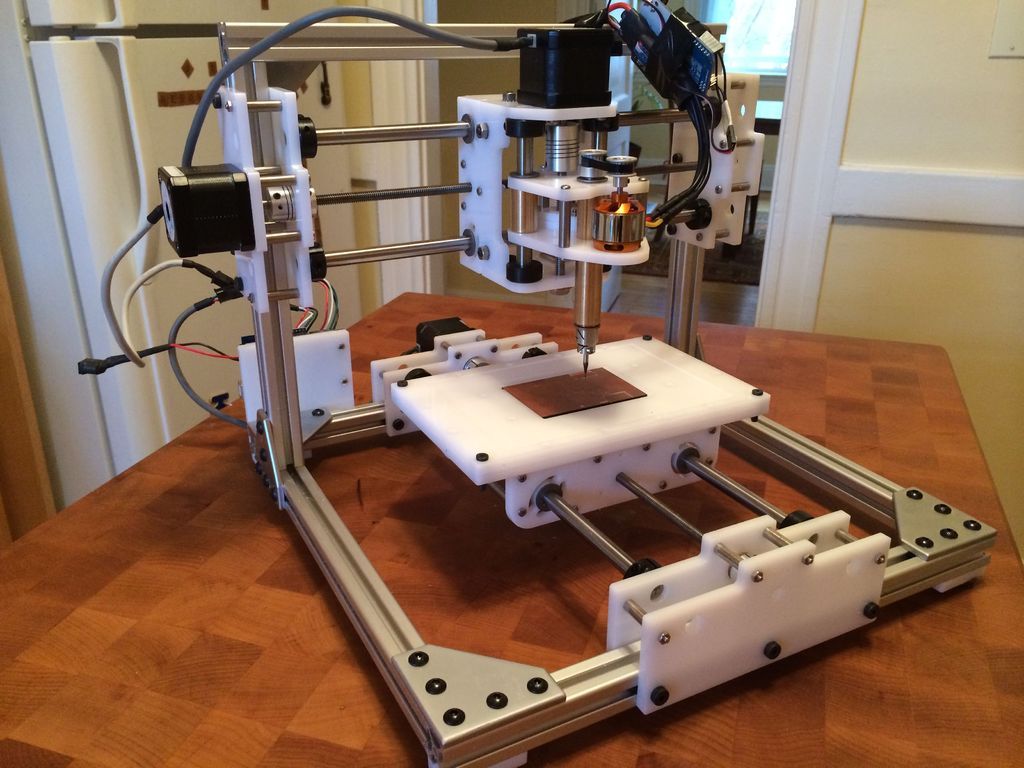 I made this upgrade after having to throw away a few RAMPS 1.4s.
I made this upgrade after having to throw away a few RAMPS 1.4s. - Select the correct filament diameter for printing. I recommend using 1.75mm plastic for MK8 and MK10. If we take plastic, for example, 3 mm, then the extruder simply does not have enough strength to push it at an acceptable speed - everything will be printed much longer, and the quality will drop. ABS plastic is ideal for MK8, MK10 will be able to produce products from polycarbonate. nine0022
- Use only new and precise X and Y guides. Print quality will be affected. It is difficult to count on good quality with bent or deformed guides along the axes.
- Take care of cooling. During my experiments with various extruders, the MK10 showed the best results - it prints quite accurately and quickly. The MK10 can also print plastics that require a higher print temperature than ABS, such as polycarbonate. Although it is not as prone to overheating as its younger brother MK8, I still recommend taking care of its cooling by adding a cooler to your design.
 It must be permanently enabled, this option can be configured in Slicer. You can also add coolers to keep the stepper motors at an acceptable temperature, however, make sure that their air flows do not fall on the printed part, as this can lead to its deformation due to too rapid cooling. nine0022
It must be permanently enabled, this option can be configured in Slicer. You can also add coolers to keep the stepper motors at an acceptable temperature, however, make sure that their air flows do not fall on the printed part, as this can lead to its deformation due to too rapid cooling. nine0022 - Consider heat retention. Yes, on the one hand, we are struggling with overheating of the elements. On the other hand, a uniform temperature around the printer will contribute to high-quality printing (the plastic will be more pliable). To achieve a uniform temperature, you can put our printer, for example, in a cardboard box. The main thing is to connect and configure the coolers before that, as described above.
- Consider insulating your desk. Heated table heats up to high temperatures. And if part of this heat leaves properly, heating the printed part, then the second part (from below) simply goes down. In order to concentrate the heat from the table onto the part, it is possible to carry out an operation to thermally insulate it.
 To do this, I simply attach a cork mouse pad to its bottom using stationery clips. nine0022
To do this, I simply attach a cork mouse pad to its bottom using stationery clips. nine0022
Pins
I am sure that during the build process you will encounter a number of difficulties specific to your project. Neither this text nor even the most detailed guides will insure against this.
As I wrote in the introductory part, the above does not claim the status of a detailed assembly manual. It is almost impossible to describe all, all the stages and their subtleties within the framework of one such text. First of all, this is an overview material that will help you prepare for the assembly process (both mentally and financially), understand whether you personally need to bother with self-assembly - or give up on everything and buy a ready-made solution. nine0003
For me, assembling printers has become an exciting hobby that helps me solve some issues in home and work affairs, take my mind off programming and do something interesting with my own hands. For my children - entertainment and the opportunity to get unusual and unique toys.


